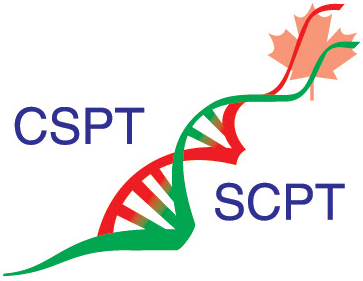
Selected abstracts:
Establishing Quality Control Standards of Mesenchymal Stromal/Stem Cell (MSC)-Derived Immunotherapeutic Products through Identification and Validation of Functional Biomarkers
Sarah Cummings1, *, Shirley Qiu1, *, Jonathan Gobin1, Adrian Verster2, Marybeth Creskey1, Gauri Muradia1, Andrew Stalker1, Jelica Mehic1, Nicholas Petronella2, Lisheng Wang3,4, Xu Zhang1, Michael Rosu-Myles1,4, Jessie R. Lavoie1,4
1 Centre for Oncology, Radiopharmaceuticals and Research, Biologic and Radiopharmaceutical Drugs Directorate, Health Products and Food Branch, Health Canada, Ottawa, ON, K1A 0K9, Canada
2 Biostatistics and Modelling Division, Bureau of Food Surveillance and Science Integration, Food Directorate, Health Products and Food Branch, Health Canada, Ottawa, ON, K1A 0K9, Canada
3 Department of Biochemistry, Microbiology and Immunology, Faculty of Medicine, University of Ottawa, Ottawa, ON, K1H 8M5, Canada.
4 Regenerative Medicine Program, Ottawa Hospital Research Institute, Ottawa, ON, K1H 8L6, Canada
*Authors contributed equally to this work
Background/Issue(s) and Objectives
Mesenchymal stromal/stem cells (MSCs) have been extensively studied as a cell-based therapy for immune-related disorders. The ability of MSCs to modulate immune responses has led to the Health Canada approval of one MSC therapy for graft-versus-host disease. In addition to MSCs, the investigation of cell-free alternatives, including extracellular vesicles (EVs), is rapidly expanding. EVs secreted by MSCs are tiny particles containing active biological components that possess similar immune modulatory properties to their parental cells. However, the mechanisms by which their immunomodulatory functions are exerted remain unclear, posing a key regulatory challenge for the evaluation of these novel products for safety and efficacy. The objective of this study is to characterize specific biomarkers on MSC-EVs and validate their involvement in immunomodulation. This would allow for improved product quality control through the establishment of targeted bioassays, ultimately enhancing product safety.
Design/Method/Description
We established a cell-based assay using human-derived peripheral blood mononuclear cells and flow cytometry that we employed to assess the immunosuppressive function of MSC-EVs. We then sought to identify possible biomarkers of immunomodulatory activity on MSC-EVs through the combination of proteomics (large scale protein discovery) and bioinformatics. Candidate biomarkers were assessed for their involvement in immune modulation using our established immune cell based bioassay.
Results/Outputs
We have demonstrated that MSC-EVs exhibit a dose-dependent, immunosuppressive effect on human primary peripheral blood mononuclear cells in our established immune cell-based assay, supporting their potential as immune modulatory therapies. Additionally, through our proteomics-bioinformatics approach, we have identified several surface receptors on MSC-EVs that are predicted to interact with immune cells, representing candidate biomarkers of MSC-EV immune modulatory function. Ongoing studies seek to validate the role of these candidate biomarkers in immune modulation using targeted depletion via gene editing methods and our validated immune cell assays.
Conclusions/Impacts/Outcomes/Implications/Next Steps
Identifying and characterizing specific biomarkers on MSCs and MSC-EVs that play a role in immune modulation will provide insight into the mechanism of action through which MSCs and MSC-EVs exert their immunosuppressive effects. This insight will be beneficial in the eventual regulation of these products as it will help to define essential criteria needed to qualify these products during evaluation, in turn leading to improved product safety profiles.
---
Pharmacogenomics of β-lactam Antibiotic-induced Severe Cutaneous Adverse Reactions
Wan-Chun Chang1,2, Miguel Cordova-Delgado1,2, Colin Ross2,3, Bruce Carleton1,2
1. Division of Translational Therapeutics, Department of Pediatrics, Faculty of Medicine, University of British Columbia, Vancouver, BC, Canada
2. British Columbia Children’s Hospital Research Institute, Vancouver, BC, Canada
3. Faculty of Pharmaceutical Sciences, University of British Columbia, Vancouver, BC, Canada
BACKGROUND
β-lactam antibiotics are widely prescribed and are one of the most common drug classes to induce unexpected serious adverse reactions, particularly severe cutaneous adverse reactions (SCARs). SCARs, including drug reaction with eosinophilia and systemic symptoms (DRESS), Stevens-Johnson syndrome (SJS), and toxic epidermal necrolysis (TEN), are life-threatening events with mortality rates up to 70%. Many affected patients suffer from long-term psychological sequelae, posttraumatic stress disorder (PTSD), and fear of taking any medication in the future. There are known genetic predispositions to SCARs from several drugs, but it is unclear whether this exists in β-lactam antibiotics.
OBJECTIVE
Determine if there is a common genetic predisposition to β-lactam antibiotic-induced severe cutaneous adverse reactions (SCARs)
METHODS
196 β-lactam exposed patients, including 30 SCAR cases and 166 tolerant controls, were recruited across eight Canadian Academic Health Centres between 2005 and 2023 via Canadian Pharmacogenomics Network for Drug Safety (CPNDS). The phenotypes of SCARs were classified according to the consensus definitions of the RegiSCAR study criteria. Relevant demographic characteristics, including age, sex, and antibiotic regimens, were identified. All patients were genotyped using a custom Illumina Global Screening Array (GSA version 3.0) plus Multi-Disease add-on content. Genome-wide analysis was then performed using allelic association tests.
RESULTS
Genome-wide analysis identified 25 genetic variants within 8 genes significantly associated with β-lactam antibiotic-induced SCARs (P<5x10-8). Among these findings, a cluster of 20 SNPs located within the Chromosome 13q31.1 region displayed a robust linkage disequilibrium (LD) pattern. These strong associations were particularly among patients of European ancestry. Notably, the highest-ranking variant was an exon variant within RP11-79OI12.6 gene on Chromosome 4, showcasing an odds ratio (OR) of 14.66 (95% CI: 5.31-40.44) (P=7.98x10-11).
CONCLUSION
Patients with these variants were at a 5.7- to 43.7-fold increased risk of developing β-lactam antibiotic-induced severe cutaneous adverse reactions. These findings suggest a role for these genes in the biology underlying β-lactam antibiotic-related serious skin reactions. Further investigation of their functional roles is warranted.
